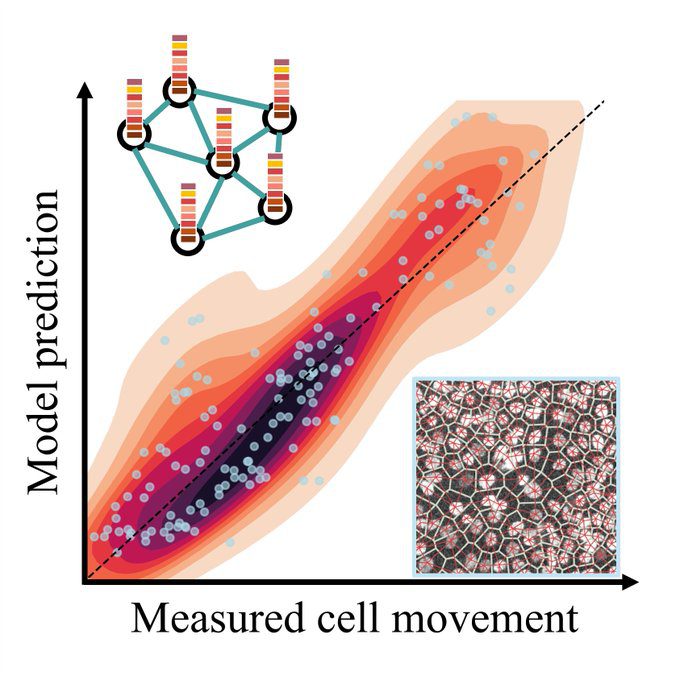The field of machine learning has seen a significant breakthrough with the development of a geometric machine learning model that can predict the collective dynamics of multicellular systems. This model, which includes predictions of cell migration speeds, operates using only single, static snapshots of cell positions. It has been trained and validated on both experimental and synthetic data, showcasing its robustness and applicability in real-world scenarios.
How the Model Works
The geometric machine learning model leverages the spatial arrangement of cells captured in static images to predict their collective behavior. This is a significant advancement because it eliminates the need for time-lapse imaging, which is often resource-intensive and time-consuming. By analyzing the geometric configuration of cells, the model can infer dynamic properties such as migration speeds and patterns.
Training and Validation
The model was trained on a diverse dataset comprising both experimental and synthetic data. This dual approach ensures that the model is not only accurate but also generalizable across different types of multicellular systems. The experimental data provides real-world scenarios, while the synthetic data allows for controlled variations and extensive testing.
Applications and Implications
The ability to predict cell migration and other dynamic behaviors from static images has profound implications for various fields, including developmental biology, cancer research, and tissue engineering. For instance, understanding how cancer cells migrate can lead to better therapeutic strategies. Similarly, insights into cell dynamics can enhance tissue engineering efforts by optimizing cell placement and growth conditions.
Comparison with Traditional Methods
Traditional methods of studying cell dynamics often rely on time-lapse microscopy, which involves capturing a series of images over time. This approach, while effective, is limited by the need for continuous imaging and the potential for phototoxicity. In contrast, the geometric machine learning model provides a non-invasive and efficient alternative, making it a valuable tool for researchers.
Future Directions
The success of this model opens up new avenues for research and development. Future work could focus on refining the model to handle more complex multicellular systems and integrating it with other machine learning techniques for enhanced predictive capabilities. Additionally, expanding the dataset to include more diverse cell types and conditions will further improve the model’s accuracy and applicability.
Conclusion
The geometric machine learning model represents a significant advancement in the study of multicellular systems. By predicting collective dynamics from static snapshots, it offers a powerful and efficient tool for researchers. As the model continues to evolve, it holds the potential to revolutionize our understanding of cell behavior and contribute to advancements in various scientific fields.
Ready to Transform Your Hotel Experience? Schedule a free demo today
Explore Textify’s AI membership
Explore latest trends with NewsGenie
